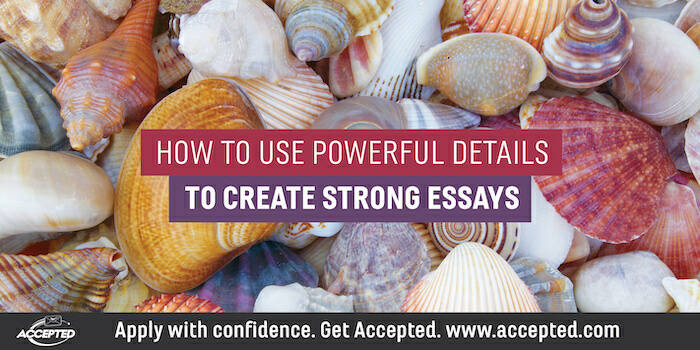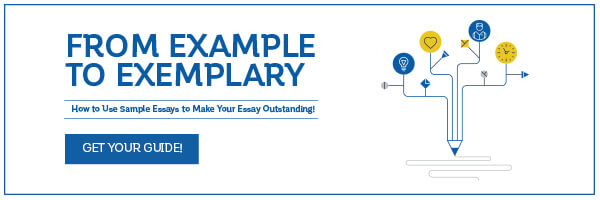
To really draw your readers into your goal-focused essay, you’re going to want to lay the scene for your future accomplishments. After all, what better way to convince the adcom of your ambitions than to illustrate them in your essay?
First, identify your goal.
When you begin your essay, try showing yourself having reached your long-term goal, rather than merely stating what it is. For example: Are you talking on the phone to clients about your electronics recycling system? Video conferencing with workers in a Southeast Asian outsourcing company? Helping NGOs build professional networks through available connectivity products?
Then, go into detail about what you’re actually doing at this future moment.
Don’t just explain that you’re working as a data analyst, but truly describe what you will look like and what you’re feeling at a particular moment. Where will you be sitting or standing? What will you say? What will happen because of what you say?
Next, draw your reader deeper into your future.
Don’t stop at the snapshot of your workday. What happens next? How have you been able to get to this point? What is the next goal you want to reach?
It is not hard to go from something tangible – a person executing job responsibilities – to an analysis of what that person needs to add to their knowledge bank to reach that career goal.
Finally, show how your background, professional experience, and other activities and achievements provide the framework for this snapshot of the future.
What are your professional and community service activities?
Help the admissions committee members get excited about the way you serve your community and employer by showing scenes of yourself involved in particular activities. Get into the details of your experience by asking yourself some questions:
- Are you talking with a mentally or physically disabled client?
- Are you on the phone with a client, vendor, or sponsor for a fundraising event?
- Are you searching for talent?
- Are you on a sports team?
- What does it look like where you are? What are you doing?
- What are you saying or thinking or feeling and what happens as a consequence of what you have done?
- What have you learned from the experience?
- How do you know you learned it?
How has your family and cultural background influenced who you are today?
Show yourself with your family in a typical room or event or show yourself alone and missing them. Or show yourself with them at a time that was definitive for everyone. For example:
- Who is talking?
- What is he or she saying?
- How did the outcome matter to you?
- What did it teach you?
How would you describe a time you executed a plan?
Start in the thick of it. Describe the scene by asking:
- Who is doing what? Why?
- How did you come up with this plan?
- What is the next step for everyone? What does that look like?
- What is the impact of your plan’s success?
Are you working on an essay about a time you demonstrated leadership?
Put yourself in the midst of the event where you are the leader and describe what’s going on:
- Who else is involved?
- How did you contact them?
- What did you suggest they do and why?
- Where were you when you realized you had led successfully?
- What does this example of leadership tell you about the attributes leadership requires?
How have your experience, activities, and commitments played a role in the evolution of your goals?
Show the committee what the activity requires of you by placing yourself in a scene from that activity:
- What equipment are you handling?
- What are the dangers or pitfalls you must avoid?
- What are you and others saying?
- What are you hoping for by participating in this activity?
- What does your participation mean to you and to others?
The value of setting the scene in your goal-oriented essay
Building scenes lets you start your essays without using exposition just to fill the reader in. If after you start the scene, you realize you do need to fill the reader in on some details, you can do so because after you have established the scene, the reader will already be interested in learning more and the exposition will not jar the reader out of the picture.
Explore our Admissions Services and work one-on-one with an expert advisor who will help you mine your experiences and measure your ambitions to create essays that paint the perfect picture of your long-term goals. Learn more about how we can help you GET ACCEPTED.
By Sheila Bender, writer, poet, former Accepted admissions consultant, and founder of Writing it Real. Want an admissions expert help you get accepted? Click here to get in touch!
Related Resources:
• 5 Fatal Flaws to Avoid in Your Grad School Statement of Purpose, a free guide
• Application Essay Tip: The Devil is in the Details
• Writing a Lead That Pops
This article originally appeared on blog.accepted.com.
Applying to a top b-school? The talented folks at Accepted have helped hundreds of applicants get accepted to their dream programs. Whether you are figuring out where to apply, writing your application essays, or prepping for your interviews, we are just a call (or click) away.
Contact us, and get matched up with the consultant who will help you get accepted!

